Scientific & Technical Services
-
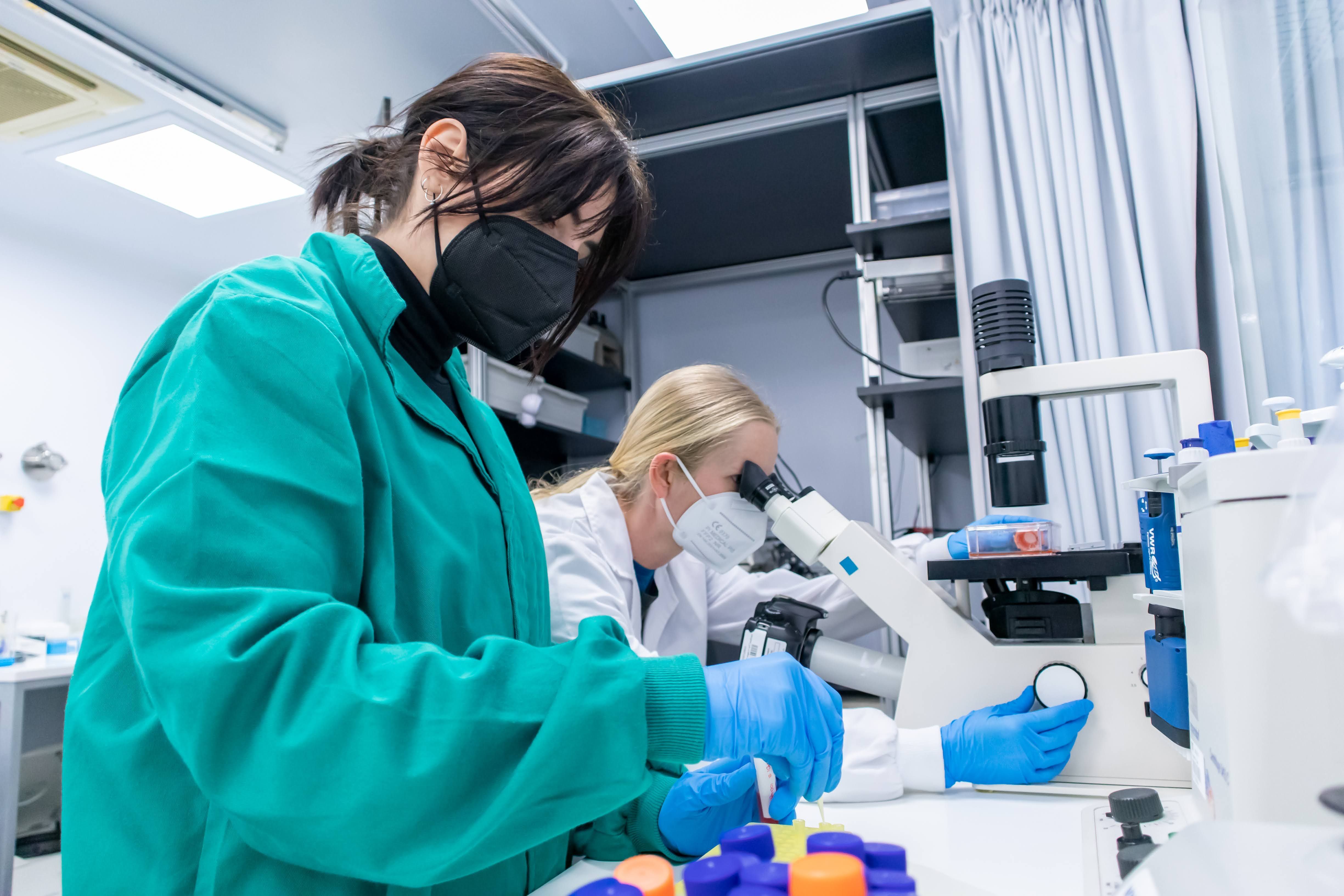
Bioservice
The Bioservice Platform is open to the different research groups working in the area of biomaterials. The service carries out biological studies, both with cells and bacteria, of the new materials and devices developed. Experiments are proposed by the users, agreed with the research group and performed by our technician. -
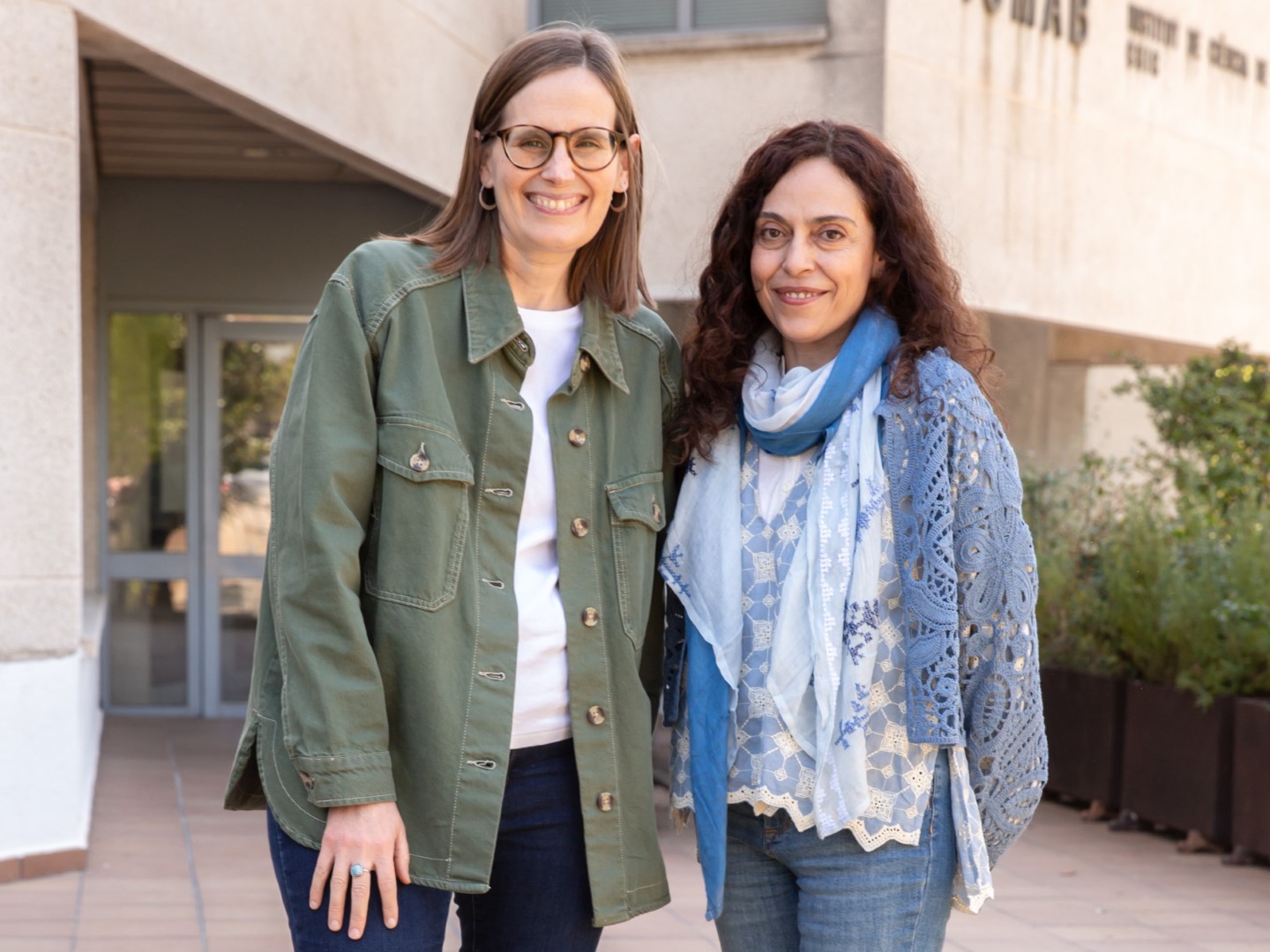
Electron Microscopy Service
The electron microscopy service is equipped with a transmission electron microscope (TEM) JEM1210 (JEOL) , scanning electron microscope (SEM) QUANTA FEI 200 FEG-ESEM and optical microscope (MO) Olympus BX51, which are operated by two technicians who serve internal and external users.
In 2023, the following internal service have been carried out: 421.5 hours of TEM, 745 hours of SEM and 218 hours of MO service. In addition, the following external service were carried out: TEM (6 hours) and SEM (42 hours). Public institutions and private companies have received it, including the following: Medi Ambient (Universitat de Girona), Química (Universitat de Girona), Grup de Biotecnologia Molecular i Industrial (GBMI) (Universitat Politècnica de Catalunya), Dept. Geologia (Universitat Autònoma de Barcelona), Tecnalia, Carburos Metálicos (Grupo Air Products), Mapa Spontex Iberica-Newel Brands.
The service has contributed to 31 scientific publications and has participated in numerous scientific dissemination activities such as the "Programa Argó" (UAB), (27/06/2023-13/07/2023), "Festival 10alamenos9 de Nanociència i Nanotecnologia" (28/04/2023), and several visits of primary and secondary school students, such as the students of the Institut Jaume Mimó (Cerdanyola del Vallès), Escola d’Adults CFA Singuerlín (Barcelona), Institut Vallés (Sabadell) and the visit of the students of the Màster de Enginyeria Biològica i Ambiental, imparted at the Escola d'Enginyeria (UAB).
-

Laboratory of Molecular Beam Epitaxy
The L-MBE is always operated in self-service mode backed up by the expert users, Dr. M. Garriga and Dr. M. I. Alonso. In 2023, the equipment was used in projects connected to three research subjects in the “NANOPTO” group. The service time was divided among research in photonic structures based on high refractive index materials (Si, Ge), thin Ge films for thermal transport studies, and Si structures for harvesting infrared solar energy.
-

Low Temperatures and Magnetometry
The main duty of the Low Temperatures and Magnetometry Service is the characterization of magnetic and electric transport techniques as a function of temperature and magnetic field. Those techniques include magnetization, AC Susceptibility, resistivity, magneto-resistance, Hall effect and IV Characteristics.
The equipment present at the Service includes:- 1 Quantum Design MPMS-XL Magnetometer
- 1 Quantum Design MPMS3 Magnetometer
- 2 Quantum Design PPMS
- 1 ICE-Oxford Cryostat
These equipments allow exploring those material properties under a wide range of temperatures (1.5K-400K) and magnetic field (up to 160kOe).
-
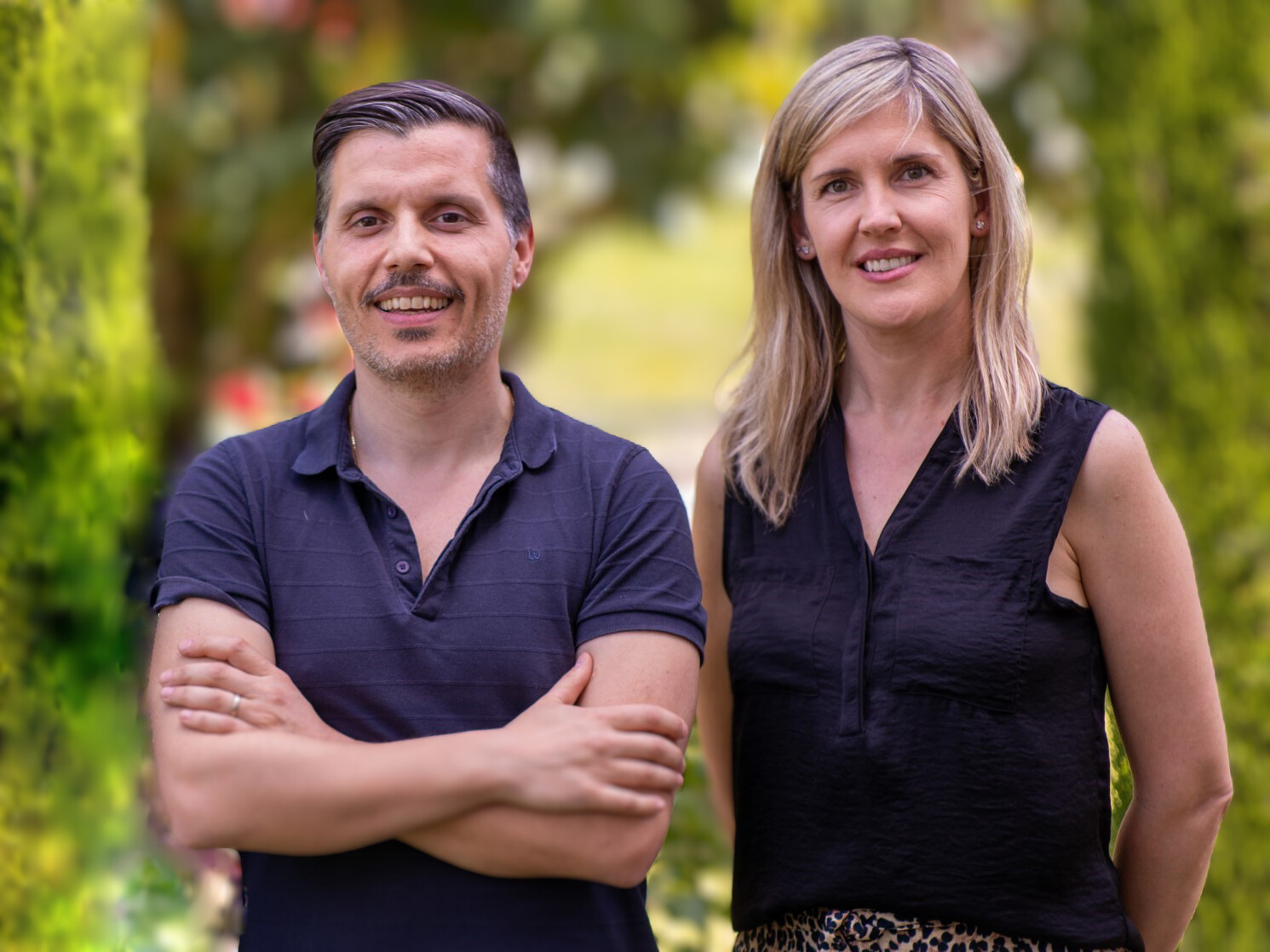
Nanoquim Platform
Nanoquim Platform is a 10000 class cleanroom (ISO7) that belongs to the ICMAB’s Scientific & Technical Services The facility is equipped with over 30 physico-chemical equipments that allow
researchers develop a variety of processes related with:- Controlled growth of nanomaterials, physical and chemical deposition, selective etching of layers or compounds
- Chemical synthesis
- Device fabrication
- Characterization of nanomaterials
- Photolitography
In a low-particle index environment and controlled humidity and temperature conditions.
Total experiment: 1945
Public center: 30
Private center: 13
PRUAB: 7 -
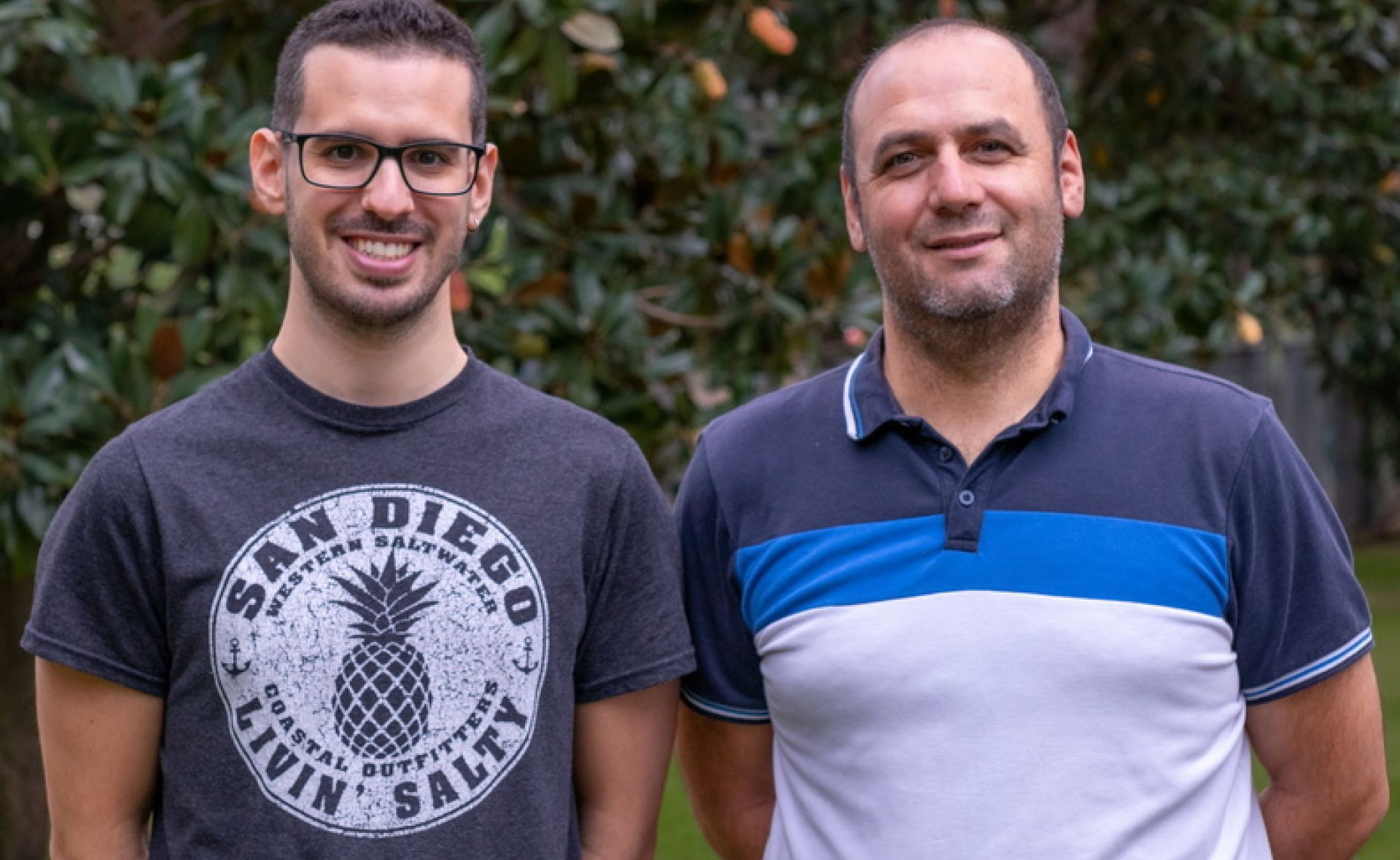
Preparation and Characterization of Soft Materials
In the Soft Materials Service, users can perform their experiments assisted by technicians or as auto-service. The service usage is split between 21 ICMAB research groups, 49 external research groups from other research facilities and universities and 14 groups from different companies.
Projects
The service was used in several research projects financed by public institutions and contracts with private companies. Below are given some significant ones:
- MOL4BIO, Procesamiento de moléculas para crear materiales híbridos estructurados jerárquicamente para aplicaciones biomédicas (PID2019-105622RB-100), Ministerio de Ciencia e Innovación de España, 2021-2023.
- Phoenix, Pharmaceutical Open Innovation Test Bed for Enabling Nano-pharmaceutical Innovative Products (953110-Phoenix), European Commission, 2021-2025.
- Micro4Nano, Multifunctional nanocarriers for nonlinear microscopy: new tools for biology and medicine (H2020-MSC-RISE-2020-101007804), European Commission, 2021-2026.
- Nanoimoc, Nanopartículas fluorescentes para cirugiada guiada de imagen aplicada a cancer de ovario (PDC2021-121481-I00). Ministerio de Ciencia e Innovación de España, 2021-2023.
- NANORESIST, Engineering Novel Nanodelivery Systems against Antimicrobioal Resistance (TECSPR19-1-0065). EU-ACCIO TECNIO Spring Industry, 2021-2023
- NABIHEAL, “Antimicrobial Nanostructured Biomaterials for Complex Wound Healing”, ref. 101092269. HORIZON-CL4-2022-RESILIENCE-01-13, 2023-2026.
- GreenX3, “Innovative and sustainable materials, processes and technologies for a greener and circular economy”, ref. 101120061. EC project, HORIZON-MSCA-2022-DN-01-01, 2023-2027.
- DYSTRO-SMARTLY “Application of the SMARTY Nanovesicle Platform to Treat Congenital Muscular Dystrophy” Ministerio de Ciencia e Innovación; FUNFUTURE‐FIP‐2021, 2022-2023
- FASOL, “Experimental development of two complementary technologies to produce particulate solid forms of active pharmaceutical ingredients”, ref. CPP2022-010004, AEI, Gobierno de España, 2023-2026.
Thesis
The service was used in the frame of the following PhD Theses:
- Nerea Gonález-Pato: “Smart nanomaterials based on organic radicals for electronic and biological applications” supervised by Imma Ratera at 02/06/2023, Universitat Autònoma de Barcelona (UAB).
- Marc Martínez Moreno: “Nanoparticles to modulate topography and ligand distribution at the nanoscale: impact on cell behaviour.” Supervised by Imma Ratera, Nora Ventosa and Judit Guasch at 09/03/2023, Universitat Autònoma de Barcelona (UAB).
Publications
Publications in which the service has been involved:
- N. Bordignon, M. Köber,G. Chinigo, C. Pontremoli, E. Sansone, G. Vargas-Nadal, M. J. M. Plata, A. F. Pla, N. Barbero*, J. Morla-Folch, N. Ventosa, Quatsomes Loaded with Squaraine Dye as an Effective Photosensitizer for Photodynamic Therapy, Pharmaceutics, 15 (3), 902, 2023, DOI: 10.3390/pharmaceutics15030902
- M. Köber, S. Illa-Tuset, L. Ferrer-Tasies, E. Moreno-Calvo, W. I. Tatkiewicz, N. Grimaldi, D. Pina, A. P. Perez, V. Lloveras, J. Vidal-Gancedo, D. Bulone, I. Ratera, J. S. Pedersen, D. Danino, J. Veciana, J. Faraudo, N. Ventosa, Stable nanovesicles formed by intrinsically planar bilayers, J. Colloid and Interface Science, 631, 202-211, 2023, DOI: 10.1016/j.jcis.2022.10.104
- A.Lopez-Cano, N. Ferrer-Miralles, J. Sanchez, J. V. Carratala, X. Rodriguez Rodriguez, I. Ratera, J. Guasch, O. Q. Pich, P. Bierge, C. Garcia-de-la-Maria, J. M. Miro, E. Garcia-Fruitos, A. Aris, A Novel Generation of Tailored Antimicrobial Drugs Based on Recombinant Multidomain Proteins Pharmaceutics, 15 (4), 1068, 2023, DOI: 10.3390/pharmaceutics15041068.
- Perez Del Rio, Eduardo; Roman Alonso, Macarena; Rius, Irene; Santos, Fabiao; Castellote-Borrell, Miquel; Veciana, Jaume; Ratera, Imma; Arribas, Joaquin; Guasch, Judith, Three-dimensional cell culture of chimeric antigen receptor T cells originated from peripheral blood mononuclear cells towards cellular therapies, Cytotherapy, 2512, 1293, 1299, 2023, DOI: 10.1016/j.jcyt.2023.08.003
Outreach:
- ICMAB technical seminar called: “SOFT Materials Service: Access and new services including Design of Experiments (DOE), a rational and effective approach to practical experimentation”.
- Workshop with NANE company called: “Characterization Techniques”.
Equipment:
New equipment acquired during 2023:
- Pulse-free microfluidics system, designed for the manipulation and control of small volumes of fluids at the microscale, ranging from microliters to mililliters. The compact size, reduced sample consumption, faster reaction times, and potential for automation make microfluidic devices advantageous for a wide range of scientific and biomedical purposes.
- Design of experiments (DOE) Software platform and assistance for performing Design of Experiments, a systematic and statistical approach to planning, conducting, and analyzing experiments or tests. It involves strategically manipulating variables to gather relevant and reliable information while minimizing resources and time.
- Surface Plasmon Resonance (SPR) for the analysis of biomolecular interactions, used increasingly in drug development to characterize the binding of drugs to targets, or of any other pair of interacting molecules.
-
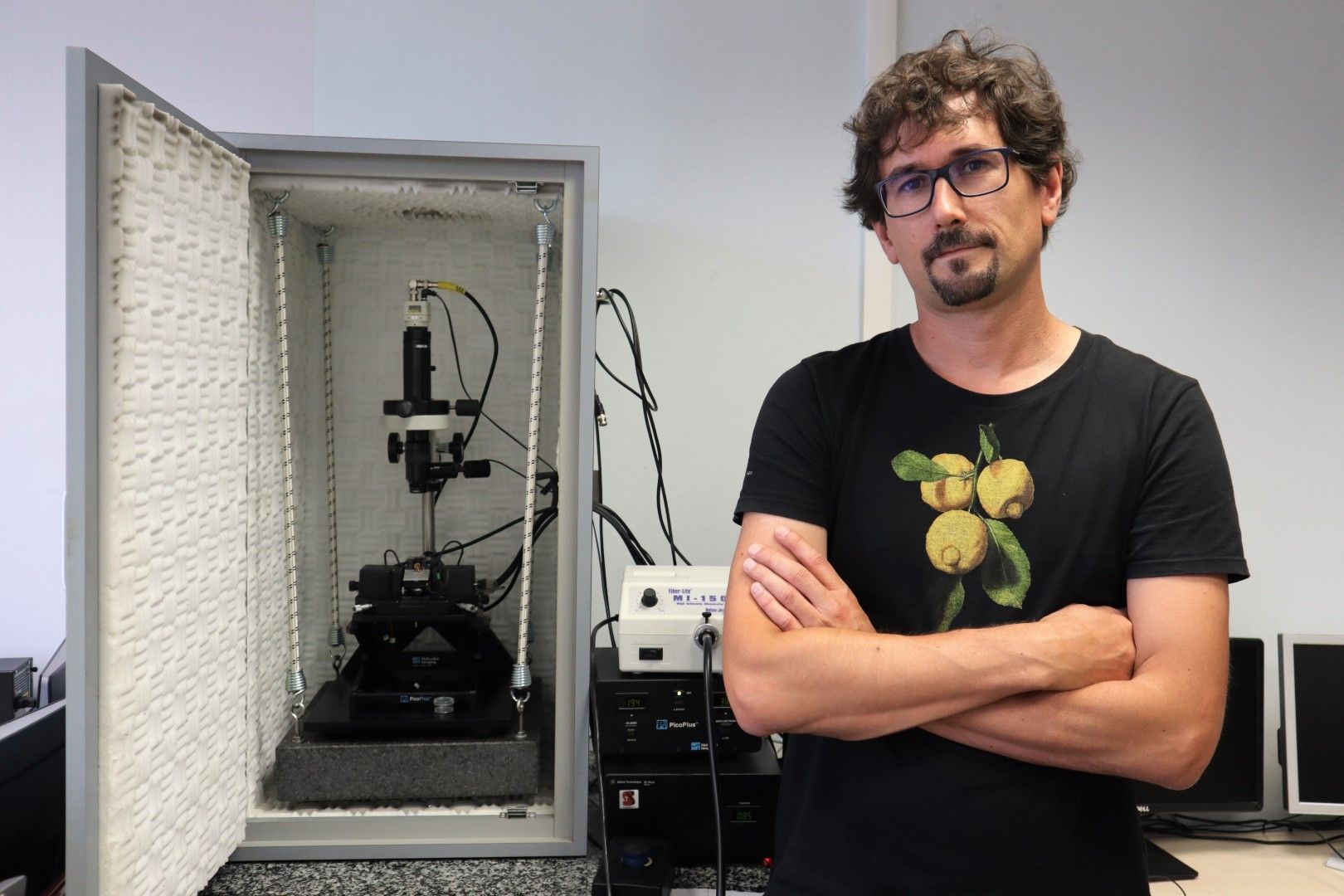
Scanning Probe Microscopy Laboratory
The SPM lab offers surface characterization by SPM related experiments both to the ICMAB community and to external users.
In June 2023 the SPM lab has initiated a new phase with the renewal of the scientist in charge and changes on the technical staff with the incorporation of a new technician. The laboratory has been redistributed and improved with the installation of nitrogen gas line. In addition, a Park System NX10 new equipment has been installed in September 2023 and, together with the Keysight 5500, has contributed to improve the topographic characterization of organic, inorganic and biological samples. Advanced surface properties characterization such as mechanical, electrostatic, conductive and magnetic have been also performed in particular samples of interest.
Since summer 2023 the service has supplied atomic force microscopy data to 14 ICMAB research groups and 2 external research groups.
-

Spectroscopic Techniques Laboratory
At the beginning of 2023, the FT-IR Jasco 4700LE presented numerous technical issues, resulting in a delay of several months for repairs. During 2023, the Service welcomed high school students from IES Jaume Mimó in Cerdanyola del Vallès and students from "Escola Santa Maria dels Apòstols" in Barcelona pursuing a "Cicle Formatiu de Grau Superior de Laboratori Clínic i Biomèdic".
The usage statistics for each equipment within the Service have been as follows:
UV-Vis-NIR Jasco V-770 and V-780: Number of users: 73; Internal use: 99.6% (24 ICMAB PIs); External use (Interquim S.A., Ferrer Internacional and UAB): 0.4%
FT-IR Jasco 4700LE: Number of users: 24; Internal use: 92.8% (18 ICMAB PIs); External use (Nanomol Technologies): 7.2%
EPR ELEXSYS E500: Number of users: 15; Internal use: 90.7% (5 ICMAB PIs); External use (Institut de Recerca i Tecnologia Agroalimentàries (IRTA) and Interquim S.A., Ferrer Internacional): 9.3%
-

Thermal Analysis Laboratory
The Thermal Analysis Lab is formed by Thermal Analysis Service and Surface Area Analysis Service. During the 2023 the Laboratory worked with two TGA (thermogravimetric analysis) and one DSC (diff erential scanning calorimetry) for the Thermal Analysis and with one Brunauer–Emmett–Teller (BET) for the Surface Aera Analysis. Regarding the TGA, we analyzed a total of 241 samples, 61 % of them belong to internal users from the ICMAB, and 39 % from external users. The DSC equipment has been used to analyse 136 samples, 12% belong to internal users and 87.5% to external users. Regarding the BET Analysis, we analyzed 318 samples, 47% from ICMAB users and 53% from external users.
The service has participated in the Programa Argó with UAB during the year.
Publicaciones:
Dopant Diffusion Inhibition in Organic Field-Effect Transistors Using Organic Semiconductor/High-Molecular-Weight Polymer Blends,Jinghai Li, Elisabetta Colantoni, Inés Temiño, Paolo Branchini, Luca Tortora*, and Marta Mas-Torrent*, Chemistry of Materials, 2023, 35, 4, 1527–1536
https://pubs.acs.org/doi/10.1021/acs.chemmater.2c02780pH Sensor Based on Supramolecular Host–Guest Interactions and an Organic Field-Effect Transistor with a Magnetic Carbon Gate Electrode, Adrián Tamayo, Ángel Campos-Lendinez, Jose Muñoz, Núria Crivillers, and Marta Mas-Torrent*, Chemistry of Materials, 2023, 35, 21, 9257–9263
https://pubs.acs.org/doi/full/10.1021/acs.chemmater.3c02034Prussian Blue Analogues as Positive Electrodes for Mg Batteries: Insights into Mg2+ Intercalation, Dr. Rafael Trócoli, Dr. Raphaëlle Houdeville, Dr. Carlos Frontera, Dr. Smobin Vincent, Dr. Juan Maria Garcia Lastra, Dr. M. Rosa Palacín, ChemSusChemVolume 17, Issue 5
https://doi.org/10.1002/cssc.202301224Ce1−xZrxO2 nanoparticles in bacterial cellulose, bio-based composites with self-regenerating antioxidant capabilities, Johanna van Gent, Anna Roig, Nanoscale, 2023, 15, 13018
https://doi.org/10.1039/D3NR02872KCocrystallization of Antifungal Compounds Mediated by Halogen Bonding, Mónica Benito*, Antonio Frontera*, and Elies Molins Cryst. Growth Des. 2023, 23, 4, 2932–2940
https://pubs.acs.org/doi/10.1021/acs.cgd.3c00067 -
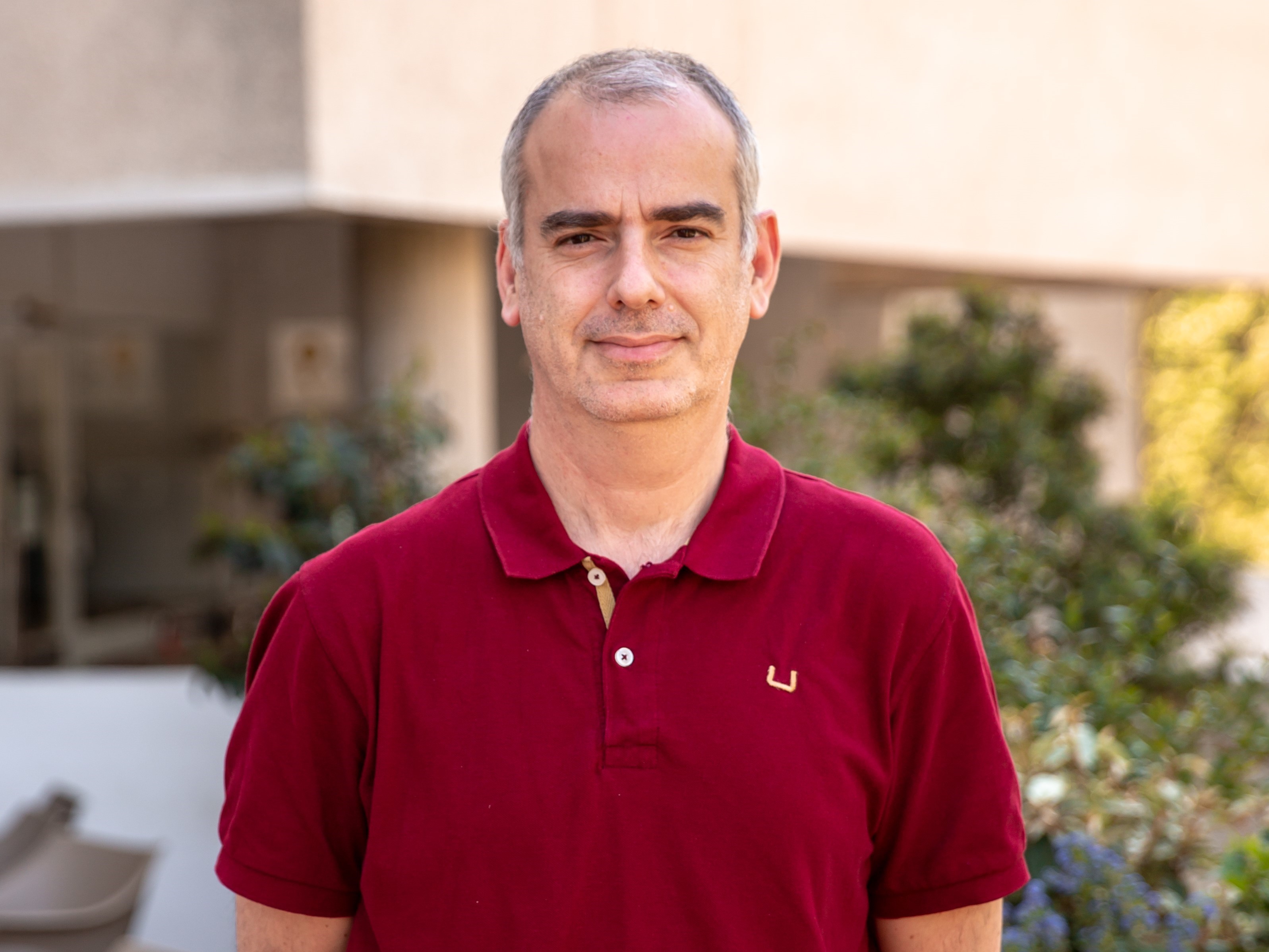
Thin Films Laboratory
The Service of Thin Films has been created to offer to the researchers the capability of fabrication of complex oxides thin films and heterostructures combining oxides and metals.
The deposition techniques are pulsed laser deposition (PLD) for oxides and sputtering for metals. Currently there are two PLD set-ups installed, and in short time both systems will be connected to a chamber with several sputtering units. PLD is a physical vapour deposition technique that uses ultraviolet laser radiation to vaporize material that is transferred to the substrate. The plot in Figure 1 is a sketch illustrating a PLD set-up.
-
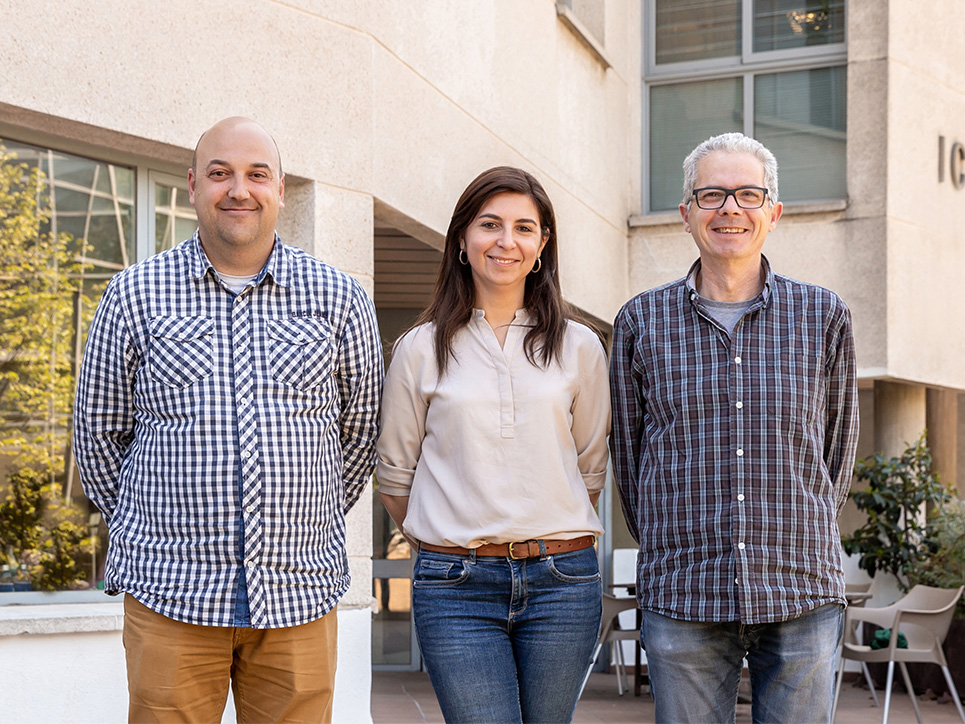
X-ray Diffraction Laboratory
Aim of the X-Ray Diffraction (XRD) Service is the acquisition of diffraction data in order to obtain information on the crystal structure and the microstructure of the analyzed material allowing a better understanding of its properties. One important technical task of the Service is the improvement of X-ray diffraction data collection procedures (especially for thin film charaterization, texture determination on layers, reflection and transmission microdiffraction, and qualitative analysis in capillary materials).
Scientific equipment available:
- Bruker D8 Advance (Powder)
X-ray Diffractometer θ-θ type system configured in Bragg-Brentano geometry. This diffractometer has a 1D silicon strip detector (LINXEYE XE-T). It is equipped with an automatic sample exchanger for more than 35 samples with a rotating sample holder suitable for powder diffraction technique. - Bruker D8 Advance (GADDS) with VANTEC-500 area detector
Identification and characterization of powders and thin films: Texture measurements, reciprocal space mapping and microdiffraction analyses. - Bruker D8-Discover
X-Ray diffraction instrument for thin film characterization equipped with four motorized axes stage. Main applications in XR Reflectometry, Rocking measurements, RSM measurements and structural phase identification. - Bruker D8 Advance A25
In two different configurations: Bragg-Brentano geometry (flat sample holders) and Debye-Scherrer geometry (for samples included in capillaries and other measurements in transmission mode).
Software
- For Powder Diffraction: PDF-4+ – ICDD database; Sieve+ – PDF-4+ Support Software (Search and Identify); EVA – Phase identification and quantitative phase analysis; TOPAS – Profile analysis, quantitative analysis, structure analysis
- For Materials Research: MULTEX –Texture analysis; LEPTOS – Thin film analysis/Residual stress
Use of the service:
In 2023, 3770 samples (amounting a total of 4705 hours) were analyzed by the XRD Service. The principal users were the research groups of Superconducting Materials and Large Scale Nanostructures, Crystallography, Solid State Chemistry, Multifunctional Thin Films and Complex Structures, Advanced Structural and Functional Characterization, and, finally, the Smart Molecular Inorganic and Hybrid.
The external users during 2022 include various companies: Nanomol Technologies, INESCOP , Applus, Bioibérica and other research centers (CNM, UAB).
Outreach, publications and projects in which the service has participated.The XRD service has played an active role in many science education activities including the visit of more than ten primary and high schools with interactive experiments to increase their interest and curiosity in science and technology , the Science Faire at the EU Researchers' Night in CosmoCaixa with "Discover ICMAB: a research center on advanced functional materials" where centers presented their research and experiments for the general public and to celebrate the Science Week 2023 we went to different schools to give some workshops.
Last year the XRD service attended and participate in the “XL Reunión Científica de la Sociedad Española de Mineralogía” congress in Madrid.
The service has participated in many publications and projects of the center:
- Mimicking Precious Stones from the Gorga Collection (Museo Nazionale Romano—Palazzo Altemps) Di Febo, Roberta; Casas, Lluís; Silvestri, Alberta; del Campo, Ángel Adolfo; Vallcorba, Oriol; Queralt, Ignasi; Oró, Judith; Villa, Mario; Gàzquez, Jaume; Rius, Jordi; Giobbe, Chiara; Bandini, Giovanna. 10.3390/min13111421
- Improved Polarization-Retention-Endurance in Hf0.5Zr0.5O2 Films by ZrO2 Capping via Electrostatic Effects . Song, Tingfeng; Koutsogiannis, Panagiotis; Magén, César; Pardo, José A.; Sánchez, Florencio; Fina, Ignasi 10.1002/aelm.202300509
- Ferro-ferri-katophorite, a new clinoamphibole from the silicocarbonatite dykes in Sierra de Maz, la Rioja, Argentina. Colombo, Fernando; Rius, Jordi; Molins, Elies; Biglia, Héctor; Galliski, Miguel Á.; Márquez-Zavalía, María Florencia; Baldo, Edgardo G. A.; Kriscautzky, Agustín 10.1180/mgm.2023.2
- Facile, fast and green synthesis of a highly porous calcium-syringate bioMOF with intriguing triple bioactivity. Rosado, Albert; Vallcorba, Oriol; Vázquez-Lasa, Blanca; García-Fernández, Luís; Ramírez-Jiménez, Rosa Ana; Aguilar, María Rosa; López-Periago, Ana M.; Domingo, Concepción; Ayllón, José A. 10.1039/d2qi02639b
Robust Antiferromagnetic FeRh Films on Mica. Quintana, Alberto; Zarco, Carlos; Dix, Nico; Sánchez, Florencio; Fina, Ignasi; Fontcuberta, Josep. 10.1021/acsaelm.3c00789
Chemical Synthesis of La0.75Sr0.25CrO3 Thin Films for p-Type Transparent Conducting Electrodes. Machado, Pamela; Guzmán, Roger; Morera, Ramon J.; Alcalà, Jordi; Palau, Anna; Zhou, Wu; Coll, Mariona. 10.1021/acs.chemmater.2c03831
- Bruker D8 Advance (Powder)